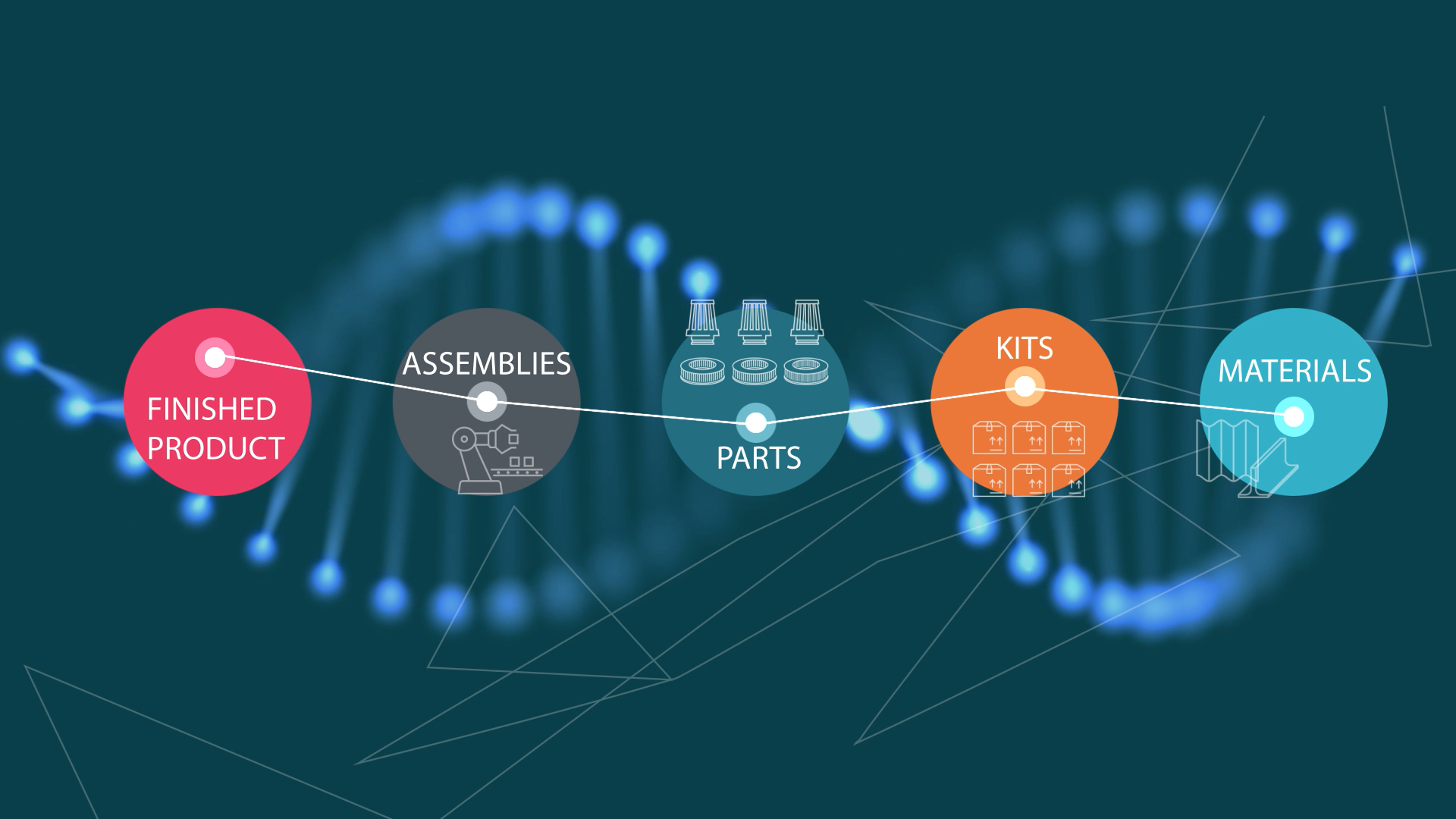The digital revolution has dramatically changed the way we manage data and processes in manufacturing operations. As technology advances, companies are increasingly turning to the concept of a digital thread to harness this powerful potential. According to Harvard Business Review, manufacturers that are just beginning their modernization journey stand to gain the most from upgrading their data management and automation processes. In fact, it is estimated that around $1 trillion is left unclaimed each year due to a lack of digitization.
In this blog post, we’ll explore the top 5 benefits companies can enjoy when embracing the digital thread in their manufacturing industry. Before we get there, let’s look into the basics.
What is the Digital Thread in Manufacturing?
The digital thread in manufacturing is an innovative way to connect product data throughout the entire life cycle of a product. By deploying this technology, companies can capture time-stamped records for every step in design, production, and operations. This enables better visibility while bringing together teams across sales, operations, and supply chains, streamlining collaboration and communication, and creating efficiencies in decision-making.
By harnessing digital brilliance with cloud computing, artificial intelligence (AI), and analytics, this dynamic new approach gives manufacturers the ability to understand customer needs more quickly and make agile decisions. Ultimately creating an entirely new level of innovation with improved quality and customer satisfaction.
How Does Digital Thread Manufacturing Work?
The digital thread works by collecting data related to activities throughout a product’s life cycle—from design to production and beyond—and then linking this data together through shared applications or networks. This allows for greater visibility across different departments within an organization as well as with external suppliers or customers.
As changes are made in one department, they are automatically reflected in other areas that need to be informed about them. By leveraging the digital thread’s real-time analytics capabilities, manufacturers can gain valuable insights into their operations that would otherwise take days or weeks to uncover manually.
You can easily identify patterns and spot areas where improvements can be made to increase efficiency and productivity across your facilities. Additionally, you can use predictive analytics to anticipate problems before they occur and take corrective action right away if necessary
Digital Thread vs. Digital Twin: What is the Difference?
The digital thread and the digital twin have become two of the most popular terms in the field of technology and engineering. Both are used to describe a new wave of digitized information that is utilized to help engineers, manufacturers, and organizations make informed decisions.
As many manufacturing companies seek the competitive advantage of resilience, efficiency, sustainability, and profitability in their operations and supply chains, Indranil Sircar at Microsoft proposes digitalizing their business processes as a solution. Leveraging digital transformation while integrating digital twins and threads will enable companies to gain a holistic picture of how their business is performing, as well as providing them with predictive insights on where it may go.
Let’s explore what each term means and discuss how they are different from each other
What is a Digital Thread?
A digital thread is defined as “a shared data connection that allows information about a product or project to be collected, stored, shared, and accessed throughout its entire life cycle.” This includes collecting data from each stage of production, storing that data in an integrated database, and then providing access for tracking changes over time.
A digital thread can be used for anything from parts inventory management to product lifecycle management (PLM). It is also a great tool for improving communication among members of a team who need access to different types of data quickly.
What is a Digital Twin?
A digital twin is an exact virtual replica or model of physical objects such as products, machines, buildings, or processes. This virtual representation provides detailed insights into the operation and performance of real-world assets by combining real-time simulation modeling with predictive analytics.
Digital twins provide data points that allow users to monitor processes accurately while helping them identify potential improvements or areas for optimization before they occur in the physical environment. You can also use them as part of predictive maintenance programs that anticipate when machinery needs servicing or repair before any issues arise
How are Digital Thread and Digital Twin Different?
While both digital threads and digital twins have similar characteristics, there are some key differences between them:
- Digital threads focus on connecting real-time data across multiple sources while digital twins focus on creating virtual replicas of physical assets.
- Digital threads help trace or track information over time while digital twins focus on using this information for predictive analysis.
- Digital threads collect information about individual pieces that make up a product while digital twins create holistic models of entire products.
- Digital threads involve managing large amounts of data from multiple sources while digital twins involve creating simulations based on this same data.
The Evolution of the Digital Thread in Manufacturing
Manufacturing is an industry that has experienced vast changes over the past few decades. In recent years, one of the most significant advances has been the introduction of digital thread technology. This innovation has revolutionized how manufacturers track and analyze data, allowing for greater efficiency and accuracy.
Initially developed as an asset management tool for automotive companies, it quickly became popular in other industries as well due to its ability to improve productivity while reducing costs associated with inventory control and product tracking. Today’s digital threads are much more sophisticated than their predecessors — they enable real-time monitoring of every step involved in manufacturing processes while providing companies with valuable insights into their operations.
Top 5 Benefits of the Digital Thread in Manufacturing
1. Increased Productivity and Efficiency
The use of digital thread technology in manufacturing can increase productivity and efficiency across the production process. By connecting the various stages of production, manufacturers can quickly identify bottlenecks and take corrective action to improve overall performance. Additionally, the automation capabilities of digital thread technology eliminate manual labor, which further increases efficiency and decreases costs associated with labor.
2. Improved Quality Assurance
A key benefit of digital thread technology is its ability to ensure quality control throughout the production process. Digital threads enable real-time tracking and monitoring of materials, components, and products throughout their lifecycle to ensure they meet quality standards. This helps manufacturers maintain high-quality standards while also reducing waste and material losses due to faulty parts or components.
3. Streamlined Design and Development Cycle
With digital thread technology, design engineers are able to rapidly develop new products using existing components, reducing time-to-market for these products. This technology also allows for easy prototyping as changes can be made quickly without having to re-manufacture components or start from scratch each time a new version is created. This enables companies to rapidly test out different design concepts without spending too much on prototyping costs.
4. Increased Collaboration Between Teams
Digital thread technology enables teams across different departments within an organization to easily collaborate by providing real-time access to product data at every stage of development and manufacture.
This eliminates the need for duplication of efforts as all stakeholders always have access to up-to-date information, ensuring transparency between teams while also improving communication between stakeholders during product development cycles.
5. Reduced Risk and Cost Overruns
By connecting all stages in the production process through a digital thread, manufacturers can spot potential problems early on so that they can be addressed before they become full-blown issues later down the line. Moreover, this technology helps reduce cost overruns during a project’s life cycle by helping manufacturers better manage their resources more effectively. It also provides visibility into how materials are being used so that any anomalies can be spotted quickly. These anomalies can become major issues requiring additional time or cost investment from the company’s side if left unfold.
Digital Thread Technology: The Future Is Here
The technology involves using Internet of Things (IoT) sensors to track data from different stages in the manufacturing process, which then feeds into analytics software that can identify problems and opportunities for improvement. It also enables manufacturers to better control quality across various stages of production and ensure compliance with regulations. As this technology continues to advance, more manufacturers are looking into incorporating it into their operations for a competitive edge.
It’s clear that digital thread technology has the potential to revolutionize modern manufacturing processes around the globe by increasing efficiency and reducing costs significantly across multiple industries such as automotive, aerospace, consumer electronics, and medical device manufacturing among others.
As machine learning algorithms continue to develop alongside advances in robotics and automation systems along with smart connected factory solutions, we’ll see an unprecedented level of precision throughout each step in the production cycle. This will help yield tangible benefits for businesses everywhere including increased profitability due to lower overhead expenses–all thanks to digital thread technology.
Bottom Line
Digital thread helps bring all the aspects of design, engineering, and manufacturing into a single system. This results in faster product development timelines, better quality products, increased customer satisfaction, and lower production costs.
Overall, digital thread is improving the efficiency and effectiveness of manufacturing processes while also reducing errors and waste. If you’re looking to improve your own manufacturing process, we hope this helps.










